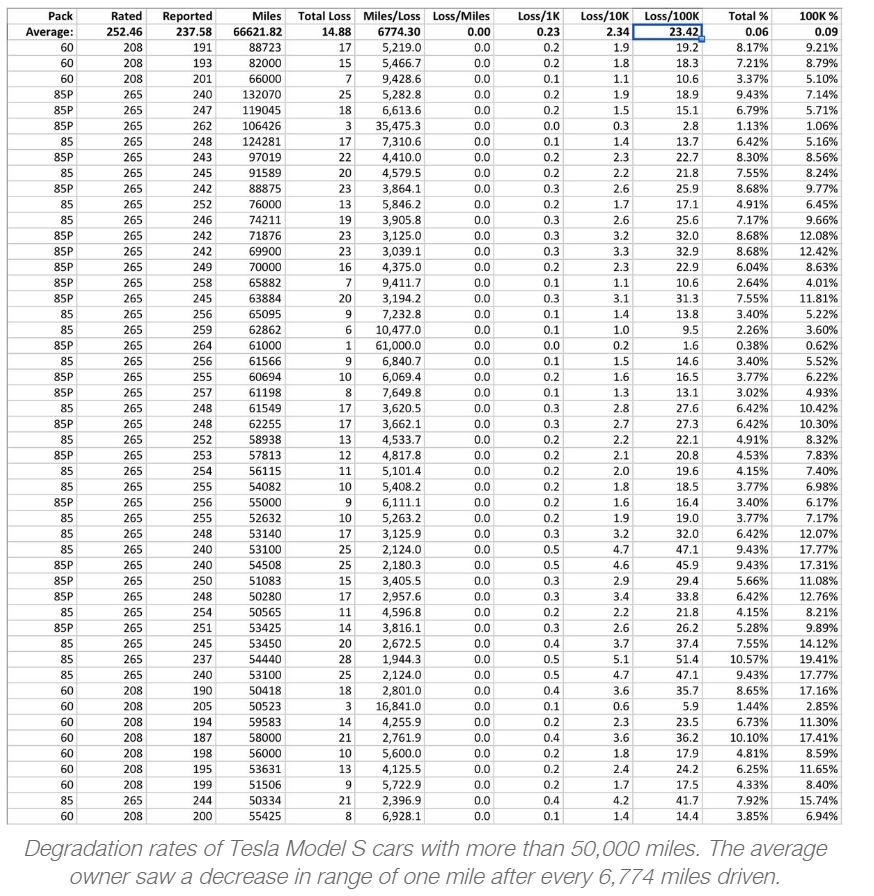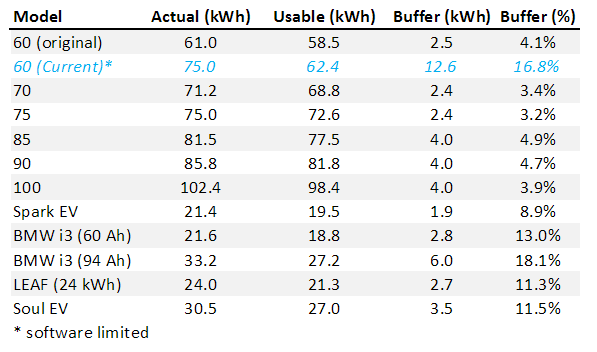GetOffYourGas
Well-known member
WetEV said:I also monitor the energy used to recharge the car. Charging station logs it. So far, at least, that information is consistent with the LeafSpy estimates. Charged a few days ago from 35% SOC to full using 14.7kWh. 240V 30A L2 station. I compute about 92% of capacity.
Note that with LeafSpy full is actually 95% SOC, and stop is at about 2% SOC. The dash meter for state of charge reads 100% when LeafSpy reads 95%.
Now, if I was bored, I'd drive the car until turtle, park by a charging station and run the heat until shutdown. Then record the energy to recharge the car, and compare with the 25.4kWh needed to recharge the battery from empty to full when new. I'm not bored, yet.
Honest question - do we know that charging efficiency is more or less constant as a battery degrades? Or does a degraded battery have more internal resistance, and therefore less efficient charge cycling? If the efficiency goes down, then the battery would look less degraded than it is, since it would take more energy to charge.
Again, not a critique, but an honest question.
I have done nearly zero testing of my battery. My dash reports 11 or 12 capacity bars (roughly 79-85% or original capacity) after 5 years / 41k miles. I have tried to take care of the battery. I charge to 80% most of the time. If the battery reads 6+ temperature bars, I don't charge the car unless absolutely necessary. Fortunately where I am, even in the summer, the battery cools off to 5 bars most nights.
Given what I knew about batteries in 2012, I expected Nissan's estimates of 80% at 5 years / 70% at 8 years to be far too optimistic. In hot parts of the country I was right. But here, I seem to be tracking that.





